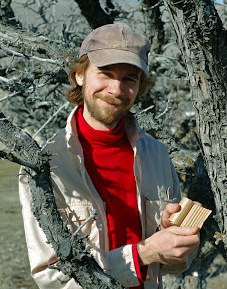Written by Robert Orpet and Louis Nottingham, WSU TFREC, Entomology October 2020.
Kaolin clay (Surround WP) is a white sprayable powder that discourages pear psylla from laying eggs on pear trees by creating a physical barrier over the tree’s surface. If sprayed early in the season, the white coating could also deter psylla from colonizing orchards, possibly due to repellency of reflected UV light to insects. Kaolin is more persistent on trees than most insecticides, especially when used with a spreader-sticker (check labels for compatibility and mixing instructions), and it has low risk of harming natural enemies because it is non-toxic. Kaolin also provides sun protection to trees, making it beneficial from a horticultural standpoint. Additional notes on particle films for pre-bloom management of psylla can be found in a previous article (https://treefruit.wsu.edu/article/prebloom-management-of-pear-psylla-with-particle-film/).
In experiments from 2017-2018 and 2018-2019 (https://treefruit.wsu.edu/article/fall-kaolin-sprays-suppress-psylla-next-year/) we found that Surround WP sprayed at the experimental rate of 100 lbs/acre on pear trees in late October or early November during leaf drop persisted on trees over the winter (Figure 1) and contributed to pear psylla adult and egg suppression the following springs (Figure 2).
Further understanding the utility of fall-applied kaolin may fill a hole in current management because psylla colonization and egg lay often occurs before the first sprays of the season are possible. For example, in the spring of this year (2020) in Wenatchee, we observed egg lay started in late February, long before most growers would typically plan or be able to spray. In this situation, application of kaolin in the fall could be a useful preventative measure to cover the period of early winterform adult movement into orchards and oviposition before spring sprays.
This year we are continuing to experiment with fall-applied kaolin on large commercial plots in Wenatchee, WA, Hood River, OR, and Medford, OR to further validate the efficacy of fall kaolin and assess commercial viability. We are also conducting small plot experiments in Wenatchee to examine a more basic grower inquiry: do the early-laid eggs on wood contribute to the first generation of nymphs, or are these eggs less important (or not at all important) compared with eggs laid on green bud tissue?


Contact
IMPORTANT: Some of the pesticides discussed in this presentation were tested under an experimental use permit granted by WSDA. Application of a pesticide to a crop or site that is not on the label is a violation of pesticide law and may subject the applicator to civil penalties up to $7,500. In addition, such an application may also result in illegal residues that could subject the crop to seizure or embargo action by WSDA and/or the U.S. Food and Drug Administration. It is your responsibility to check the label before using the product to ensure lawful use and obtain all necessary permits in advance.
Use pesticides with care. Apply them only to plants, animals, or sites listed on the labels. When mixing and applying pesticides, follow all label precautions to protect yourself and others around you. It is a violation of the law to disregard label directions. If pesticides are spilled on skin or clothing, remove clothing, and wash skin thoroughly. Store pesticides in their original containers and keep them out of the reach of children, pets, and livestock.
YOU ARE REQUIRED BY LAW TO FOLLOW THE LABEL. It is a legal document. Always read the label before using any pesticide. You, the grower, are responsible for safe pesticide use. Trade (brand) names are provided for your reference only. No discrimination is intended, and other pesticides with the same active ingredient may be suitable. No endorsement is implied.
Treefruit.wsu.edu articles may only be republished with prior author permission © Washington State University. Republished articles with permission must include: “Originally published by Washington State Tree Fruit Extension Fruit Matters at treefruit.wsu.edu” along with author(s) name, and a link to the original article.


